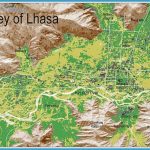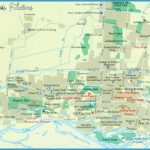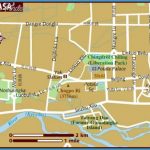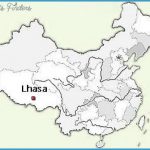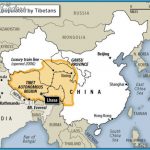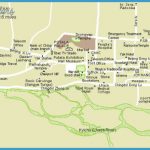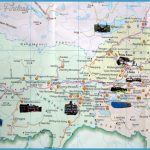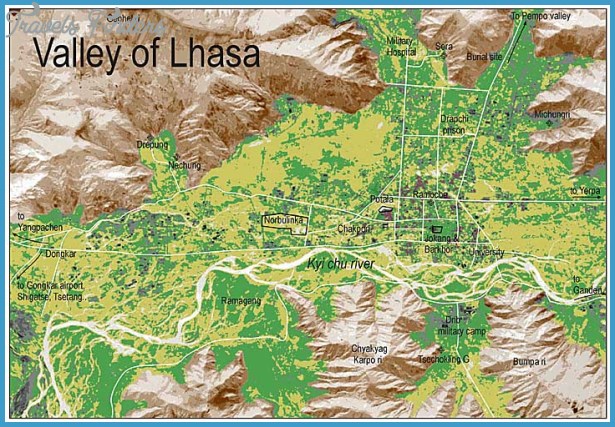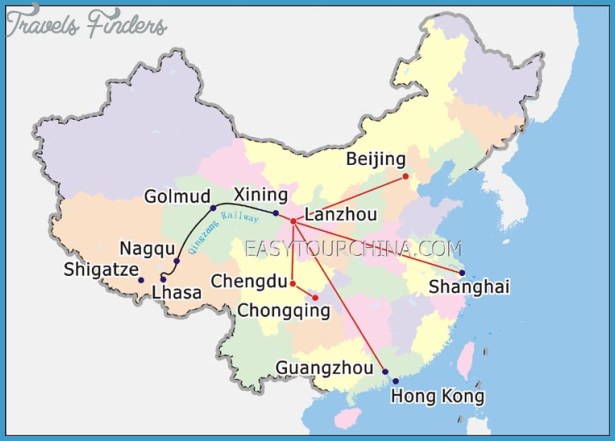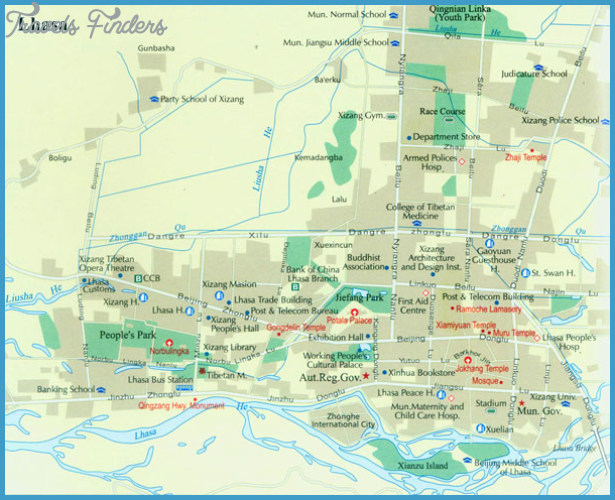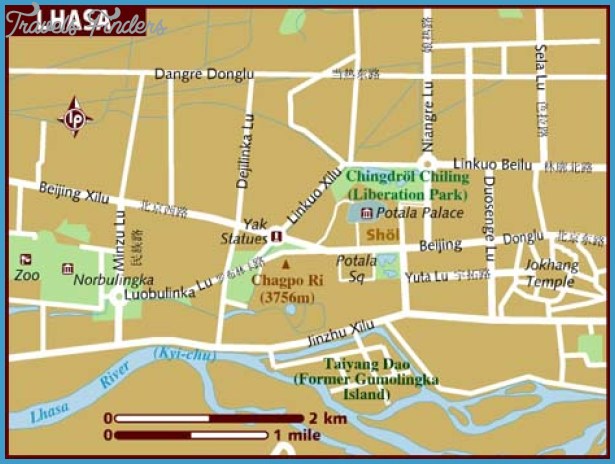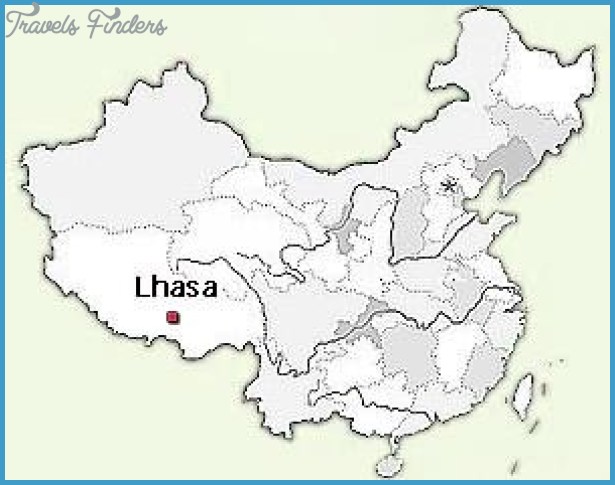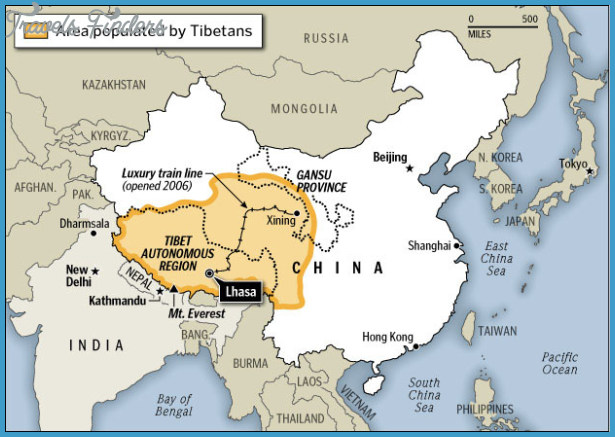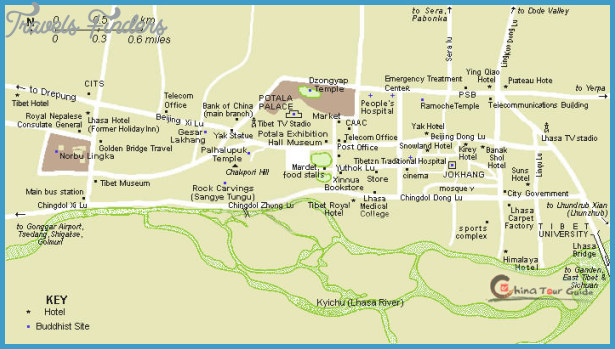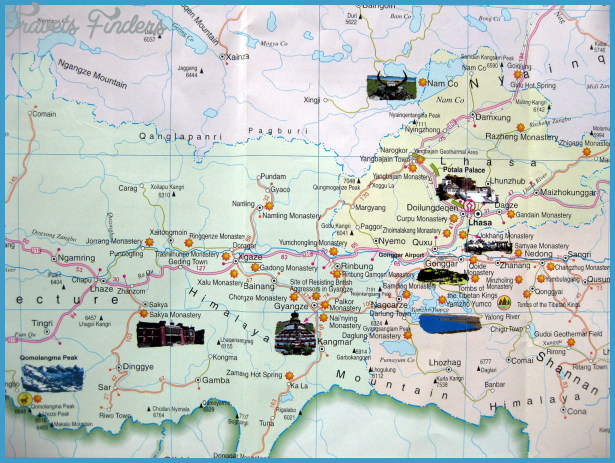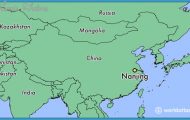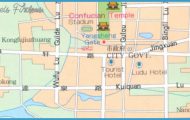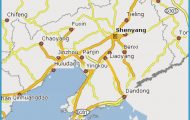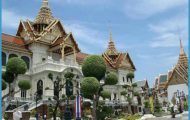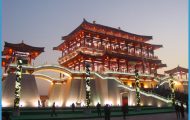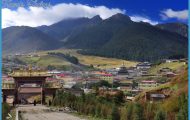Capital of the Autonomous Region of Xizang (Tibet)
Lhasa lies on the banks of the river of the same name (Lasahe; Kyichu), at91°04’E and 29°33’N, in the south of Tibet.
Lhasa’s airport lies 120km/75 miles outside the city. From here there are flights to Beijing (4%hrs) and Chengdu (2hrs). Chengdu also has bus connections (2 weeks), while Katmandu in Nepal can be reached by road.
Lhasa was once called Rasa (“goats’ earth”) and 1300 years ago was the History capital ofthe renowned Tufan kingdom. Both in the 7th and 8th c. marriages took place between a Chinese princess and the ruler of Lhasa, the Han Chinese and Tibetans being well disposed to one another at this time.
In the succeeding centuries these harmonious relations worsened to a considerable degree, however, leading to endless conflicts and military
Lhasa: detail on the Tsuglagkhang Temple south-facing hillside. Songtsen Gambo, the ruler of the Tufan kingdom, had the palace built in the 7th c. after his marriage to Princess Wen Cheng of the imperial Tang family.
In subsequent years the palace was badly damaged through weathering and pillaging by enemy soldiers. When the 5th Dalai Lama (1617-82) of the Qing dynasty (1644-1911) was proclaimed spiritual and temporal overlord ofthe Tibetans, he ordered the royal residence to be rebuilt. His successors continued the work which he had begun, until the palace attained its present dimensions. The whole building, which was left undamaged by the Cultural Revolution (1966-67), underwent restoration between 1989 and 1994.
The complex, towering to a height of over 100m/330ft, can be divided into three sections: the palaces (Gongbao), the defensive fortifications (Chengbao Xue) and the gardens (Linka). This jewel of Tibetan architecture, which also reveals Chinese influences, has some thousand rooms, and its buildings are as many as 13 storeys high.
The Red Palace contains eight gilded burial stupas of the Dalai Lamas, inlaid with precious stones. The largest of these, 15m/49ft high and containing 3.7 tonnes of gold, is the tomb ofthe 5th Dalai Lama.
The stupa of the 13th Dalai Lama is also magnificently fitted out and contains wall paintings of great interest, including one depicting the ruler’s visit to the Dowager Empress Cixi in Peking.
The White Palace includes the residence of the Dalai Lamas, the reigning kings and the tutors to the Dalai Lamas, as well as dwellings and offices. The private apartments of the 14th Dalai Lama have remained unaltered since his flight in 1959.
Many of the palace walls are covered with frescos depicting episodes from Buddhist scriptures, landscapes from the surrounding area and historical events such as the arrival of the two Tang princesses or the journey ofthe 5th Dalai Lama to Beijing.
The oldest part ofthe whole complex is the Avalokiteshvara Chapel in the north-east part of the Red Palace, also known as the bridal chamber (of Songtsen Gampo and Wen Cheng). It contains, among other things, a figure of Avalokiteshvara.
Dragon King Lake, situated behind Potala Palace, was formed as a result of excavation work carried out for the construction of the palace. Today the area around the lake is a public park. A pair of steles recall the two great victories on Tibetan soil which were gained by the Manchurian government in 1720 and 1792 against the Mongol invaders.
On the small island in the lake stands a temple consecrated to the Dragon King.
Another important religious building is the Ramoche Temple, built in the 7th c. After being devastated on several occasions, it was finally renovated in the 1980s.
These gardens, situated 4km/2V& miles away on the western edge of the city, are the most frequented park in Lhasa. The summer residence of the Dalai Lama, construction of which began in the 1840s, was once situated in the park, although the buildings to be found there today date for the most part from 1954-56.
The 360,OOOsq.m/90 acres of parkland encompass everything from grand palaces and every possible kind of pavilion to pergola and small lakes.
Sera Monastery, 5km/3 miles to the north of Lhasa, was founded in 1419 by Lamaists as a monks’ dwelling-place. The monastery contains a Tibetan copy ofthe Tripitaka from the 15th c. and a portrait embroidered on silk from the Ming period (1368-1644).
It was built in 1416 in the typical Tibetan style by adherents of the (Zhebang Si) Yellow Cap Order (Gelupka) and became the political centre of the sect, with four Buddhist seminaries being housed here. The sacred buildings, which can accommodate up to 8000 monks, form the largest Lamaist monastery in Tibet. The burial stupas ofthe 2nd, 3rd and 4th Dalai Lamas are to be found here. To the south-west of the monastery lies the palace, dating from 1530, in which the Dalai Lama resided. The nearby monastery of Nechong was the seat of the Tibetan state oracle.

